Eduard Tempest Mk.V Dual Combo, 1/48.
Recently I've decided to improve my photography and buy a lightbox, today it arrived! So as I showcase my previous builds this is the first one with some shiny now photos.
Eduard's Tempest Mk.V... An interesting kit to say the least, this came with the Royal Class box set of two Tempests with the option to build them as several different schemes in the suprisingly long service life of the RAFs finest aircraft of the war, ranging from the very first Tempest Mk.V Series 1 to see service chasing down V-1s in 1944, all the way to the brightly coloured target tugs of the 1950s.
For this built I wanted to showcase the two slightly different combat versions of the Tempest, the Series 1 and Series 2, as well as have one with the classic D-Day stripes and one from the very end of the war. I decided on SA-A of No.486 squadron who were the very first squadron to become equipped with the Tempest, who then promptly got so excited when flying the plane during conversion training that during a low altitude and quite reckless buzz of the airfield several of the RAF's brand new fighter suffered birdstrikes. Due to this the squadron was posted to Scotland, leaving No.3 squadron to become the first to be combat ready with the Tempest. Nonetheless, No.486 would replace all of their Typhoons with Tempests in April and engage in V-1 intercepts as well as be ready to begin air sweeps over Normandy during the invasions.
Looking at pictures of SA-A JN754 on the Internet, and ones included in the lovely book that came with the kit, it's clear that this Tempest received the stripes quickly like many aircraft did in June. These stripes were painted with matt distemper pand were quite thick, as well as clearly being painted on without much care (though if you look at the Squadron Leaders aircraft, SA-F, you'll see a hell of a lot more care in the application of the stripes), in fact it wasn't until late June that it was recommended that RAF aircraft get their stripes repainted in gloss largely due to the speed loss as a result of the unsmooth paint previously used. To replicate this hand painted effect whilst using an airbrush can be tricky, as visible brushstrokes won't look good in /48 scale. To get around this I applied 10mm tamiya tape to a cutting matt (18inch stripes on fighters works out to 9.55mm stripes in 48, so 10mm Tamiya does the job for me), I then cut gouges out of the tape to make it a slightly wavy, and then scraped the edges up to produce a more random effect. When applied to the model this helped create an uneven, rushed applied effect and I think it looks absolutely perfect for what I was trying to achieve.
The second Tempest was built as a Series 2, this one was flown by Pierre Clostermann of No.3 Squadron, the highest scoring French ace and the third highest scoring RAF ace. Clostermann went through several JF-E Tempests with their being 3 or 4 different serialled Tempests with this code, such as the famous red spinner one or 'Le Grand Charles'. This particular one is NV724, a replacement for NV994 which was probably his most decorated Tempest which was lost in a landing accident due to bad weather conditions. This particular Tempest lacked the 'Le Grand Charles' inscription but had the Cross of Lorraine and his revised scoreboard, and would be his personal mount up until 27th August 1945 on his last day with the squadron.
A little information about the kit, I have serious gripes with this kit but I think part of that is that I like it enough and it's so close to be perfect, but just falls short. I often find eduard focus on details whilst not focusing on the fit of the kit, and whilst making dumb decisions in silly areas. For example, this kit doesn't have a spinning propeller! It has to be glued in, its not even a model that has a push fit it literally has to be glued in. To try and get around this I put a motor in it (unpowered) and sanded the propeller hub so it would be able to slightly move, this sadly didn't work out very well. If you've viewed my current work in progress topic you'll see I used a bearing to get around this issue, but on this kit it wouldn't have worked.
Another issue I have is join lines, take the wings for example, the wing halves aren't the same size with the upper side being slightly longer, eduard in their infinite wisdom decides to put the join line in the middle of the flaps! Not in the natural panel line between the wing and the flap, just directly in the middle of the flap. This requires filling, meaning you lose all this detail eduard painstakingly produce in the kit. Finally, as you can see with JF-E flown by ace Pierre Clostermann I decided to go wheels up for it, the wheels doors are so much bigger than the actual wheel bays that it required serious modification, so much so that it cannot surely be the same scale as the doors should be in /48. Some also report issues in the construction of the cockpit and canopy but I didn't have this, I believe this is due to Eduard's quality control being not the best (but far from the worst, just average if you ask me).
Overall the Tempest Mk.V by Eduard is a great kit, but some silly oversights and strange fit issues cause issues that I find annoying. Perhaps because I like this kit so much is why I take so much issue with these issues, perhaps it's because I know Eduard can do better. Regardless for a Tempest it's the best kit on the market and with some TLC will build a great kit. The details are absolutely second-to-none though it is a shame some will inevitably be lost due to weird join seam positions (which supposedly are fixed in their future Tempest Mk.II kit), and some questionable fit if you get unlucky in the fit quality lottery. This detail, whilst too excessive at times such as the raised rivets that are so over the top they might as well be on an Airfix 1970s kit, allows a novice modeller like I me to produce an amazing result with the simple use of a wash. In fact, the jump between this Tempest and the previous kit I build it the largest jump I've made to date in quality, and in many ways I still think this is up their in my finest work to date and that largely comes down to the beautiful detail of this kit and how easy a wash can transform a model.
I eagerly look forward to Eduard's sadly slightly delayed Tempest Mk.II, and still have a plethora of decals for a Mk.V should I decide to build one of those interesting bare-metal Tempests of post-war 45-46.
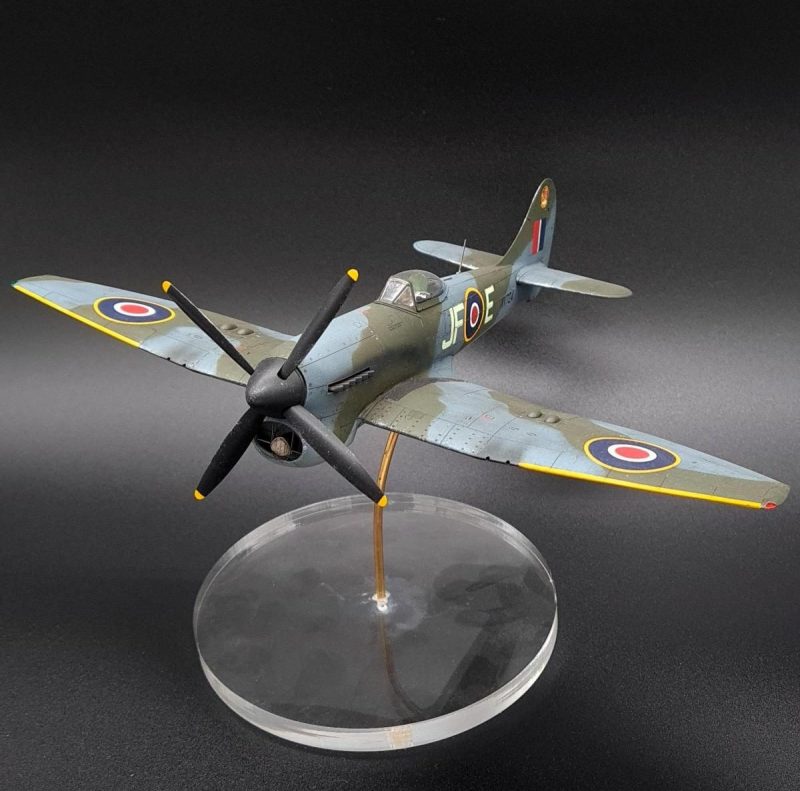
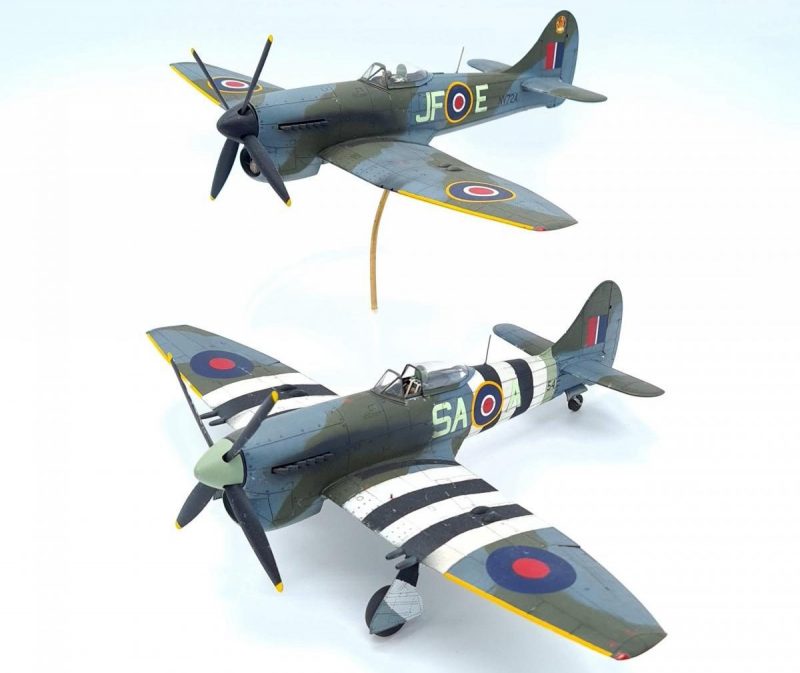
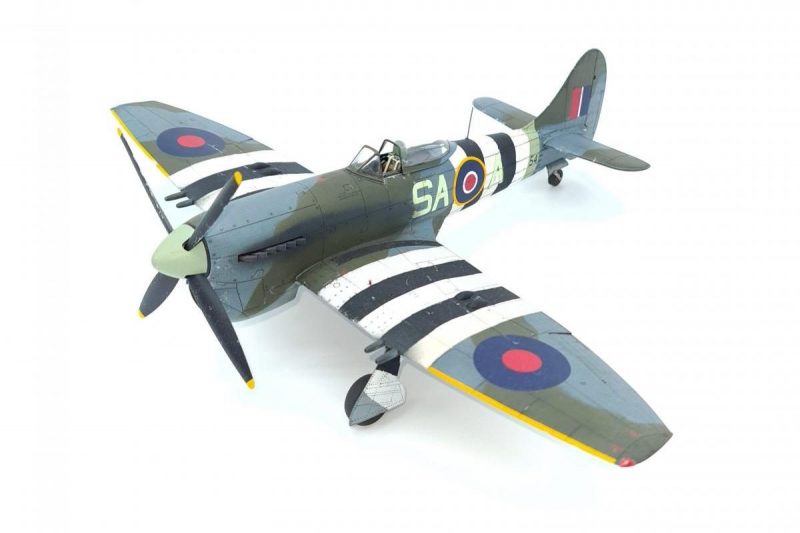
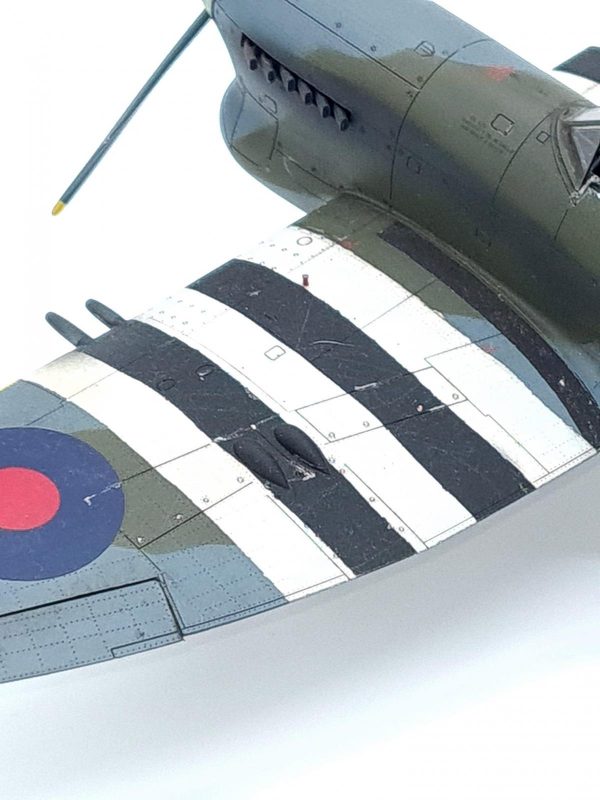
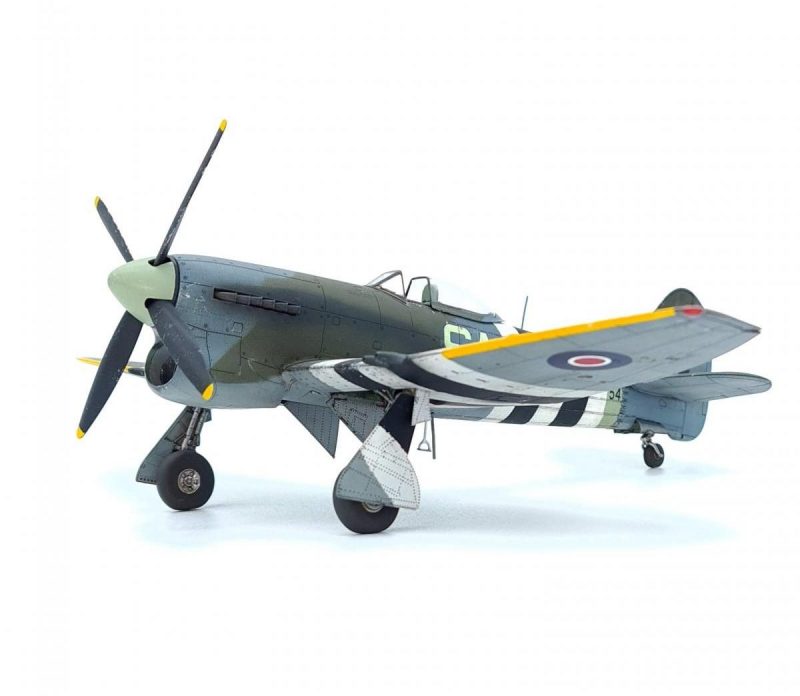
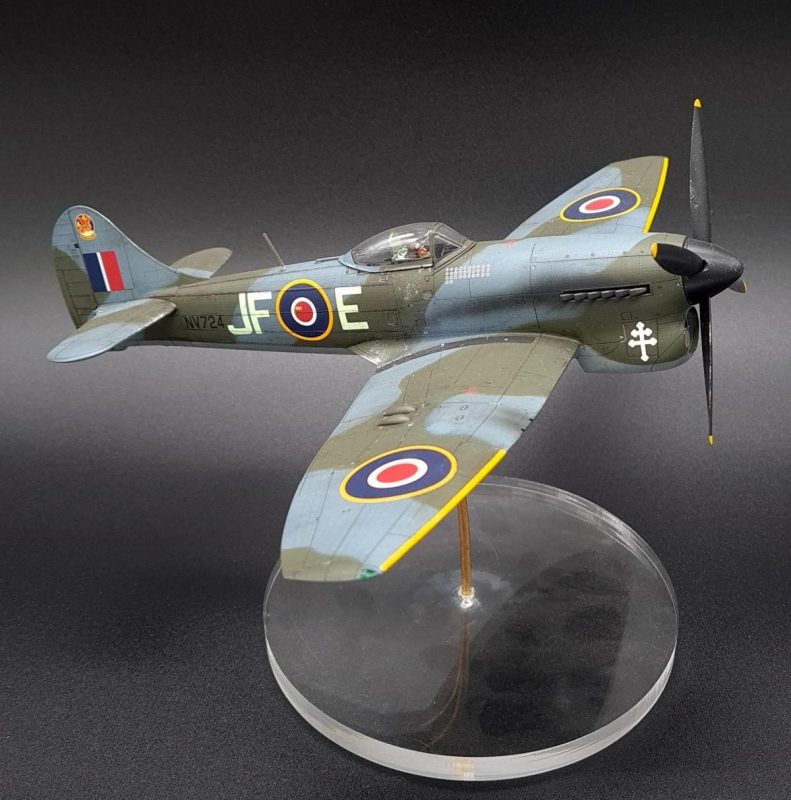
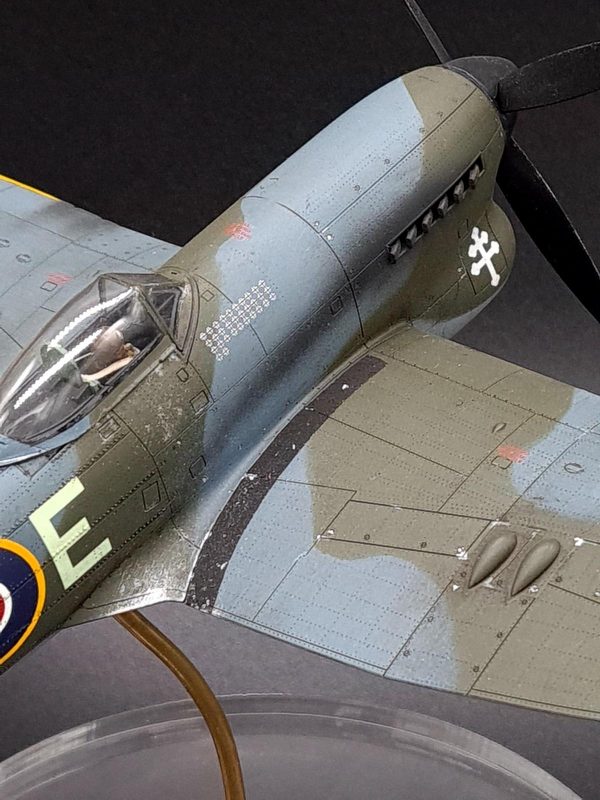
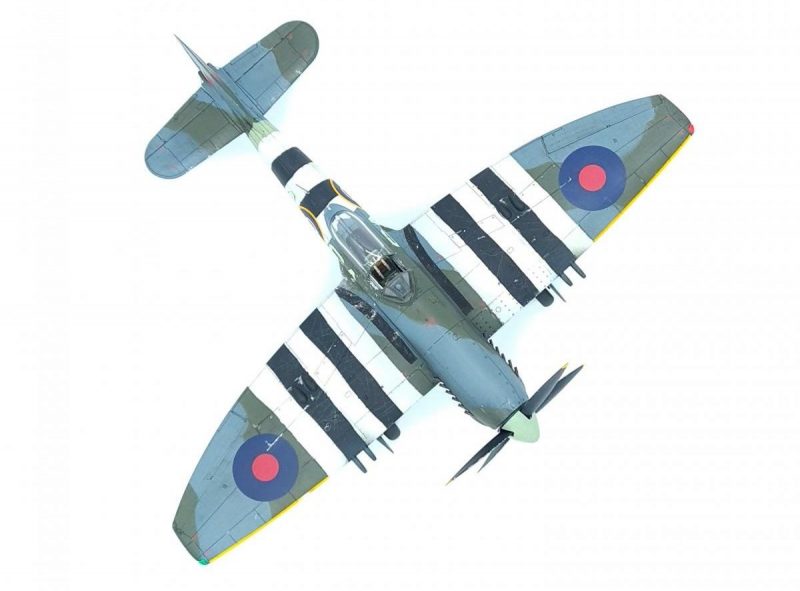
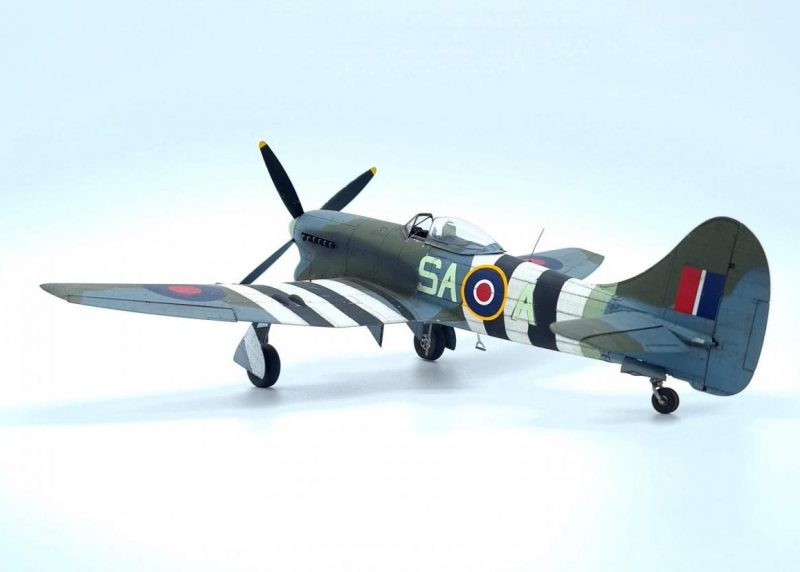
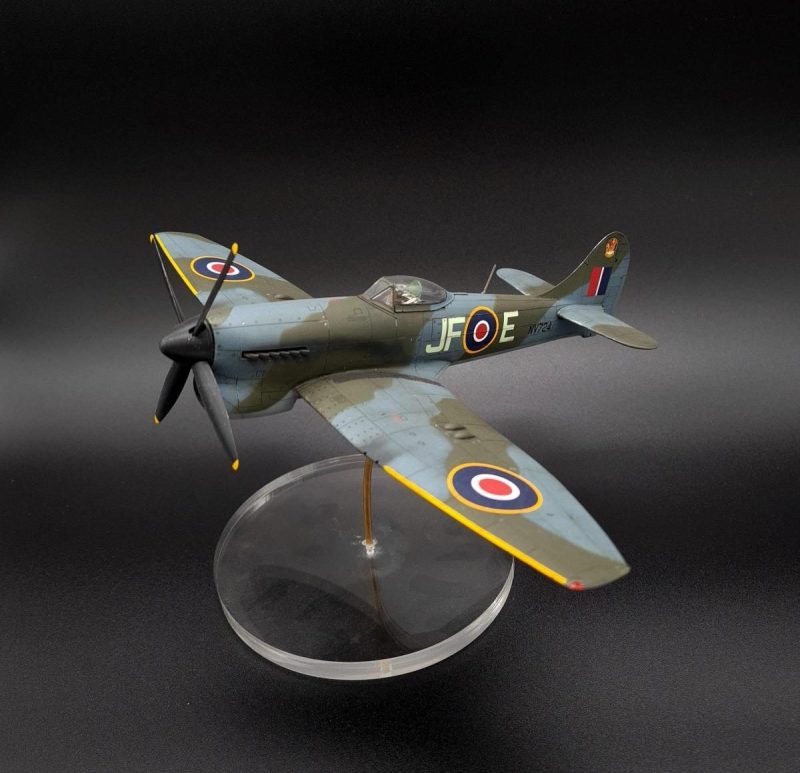
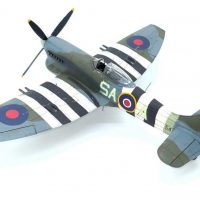

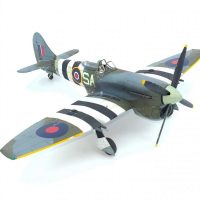
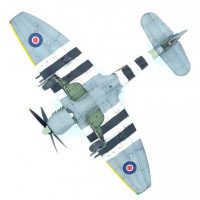

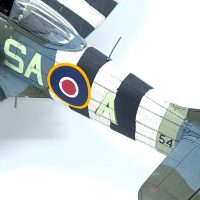
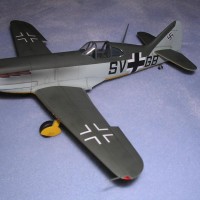
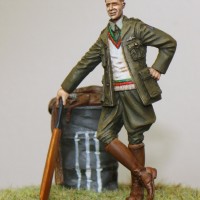
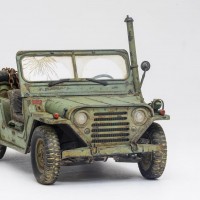
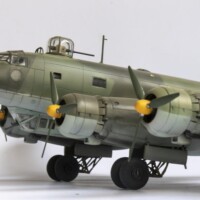
Actually, that join line on the lower wing IS a "panel line" in the flaps.
1 attached image. Click to enlarge.
As far as I can tell its not, and your model doesn't seem to have it there either. If you look at these photos you can see my attempt of filling the join seam a year ago (I'm mildly better at filling now), if you compare this to the PE set of flaps avaliable they don't have a line here, and as far as I can see on pictures there shouldn't be a line here. From what I've seen of the Tempest Mk.II CAD images they moved the join seam so it goes where the flap join is, which makes far more sense as a place to put a line in for a model.
E: To make it clear, the join seam is around 1/3 of the way from the trailing edge of the wing up the flaps, you can see a bump from the mediocre filling attempt here, as well as rivet details lost due to the filling.
2 attached images. Click to enlarge.
Love both of them, Harvey, as well as the nice, detailed review!
Thank you!
Very nice builds, Harvey.
To me your pictures looks great using this new lightbox.
Especially the ones with the dark background look great.
Thank you! I think the dark background will be the way to go on future photos
I'm unable to comment on the accuracy of the kits, or on any build problems, but the photographs are great, definitely liked.
Thank you!
Two nice tempting Tempests, great job!
Beautiful builds! Well done.